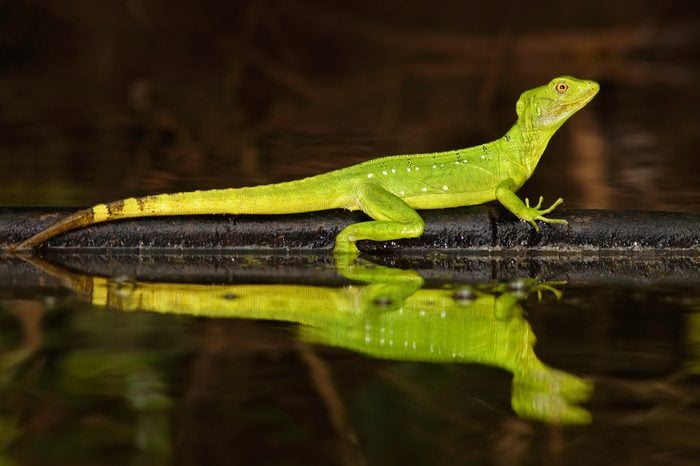
Basilisk lizards
The basilisk lizard of the family Corytophanidae has got those everyday lizards beat. “The basilisk lizard is one of a few animals that can actually walk on water. Well, it’s not so much walking as it is running. This eye-opening behavior is usually done to escape a predator,” explains Oonagh Nelson, an ecological consultant with Contract Ecology. Basilisk lizards have been known to run as far as five feet per second on the water’s surface. “This amazing feat can be accomplished thanks to their long toes, which are connected with skin. This allows them to hit the water feet first, with so much force they create a pocket of air while running. They can also swim in case they fall through.” Also known as the Jesus lizard, basilisks also use their amazing ability to catch food, such as this unsuspecting butterfly. Not every lizard can walk on water, but some make great pets—provided you can give teeny, tiny abdominal massages when needed. Don’t miss these 17 adorable pictures of wild baby animals that will immediately brighten your day.
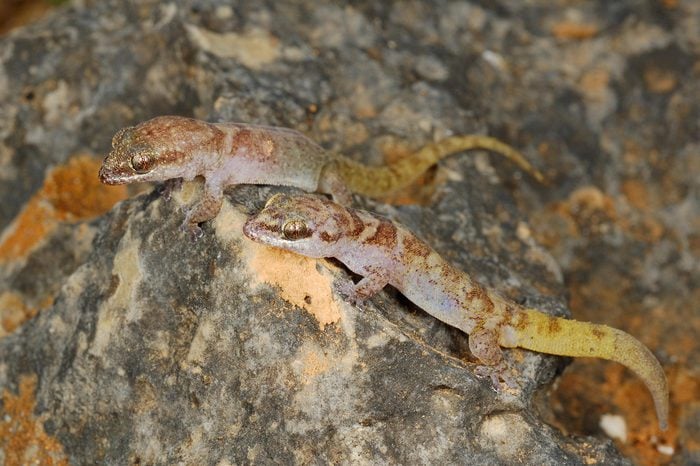
Pygmy geckos
Pygmy geckos may be best known for eyes that never have to blink, but walking on water is another super-talent these small-sized lizards have. Pygmy geckos are members of the Gekkonidae family that live deep in the tropical rain forests of South America. These nocturnal carnivores skim the water’s surface by employing the same scientific principal basilisk lizards do—they run so quickly that air pockets form under their feet to keep them afloat. There are many species of geckos, but unfortunately, some are critically endangered.
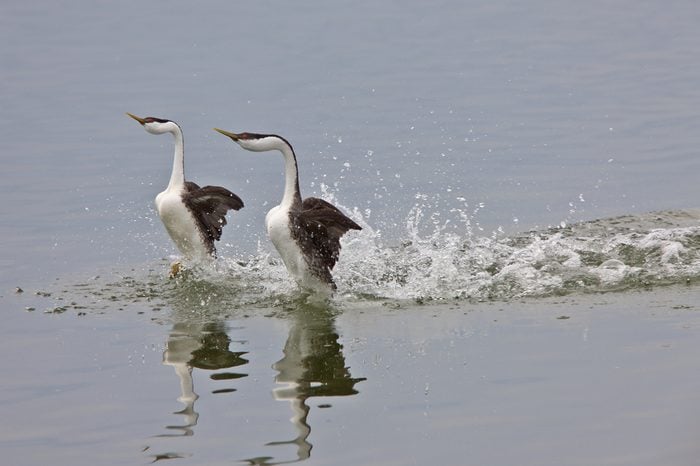
Western grebes
Western grebes are highly social birds who nest in colonies and migrate in large groups. Graceful and long-necked, baby grebes nestle onto their momma’s back within seconds of birth and are fed by both parents. It’s no wonder these sociable birds have a distinctive mating ritual, which includes a water-top dance. According to Audubon’s Guide to North American Birds, western grebes brilliantly dance across the water on their feet, side by side, as part of a courtship ritual known as rushing. These gregarious birds are one of the largest species currently known to have the ability to walk on water. They accomplish this feat by striding up to 20 steps a second while slapping the water with lobed, impressively wide, flat feet that are designed to reduce drag.
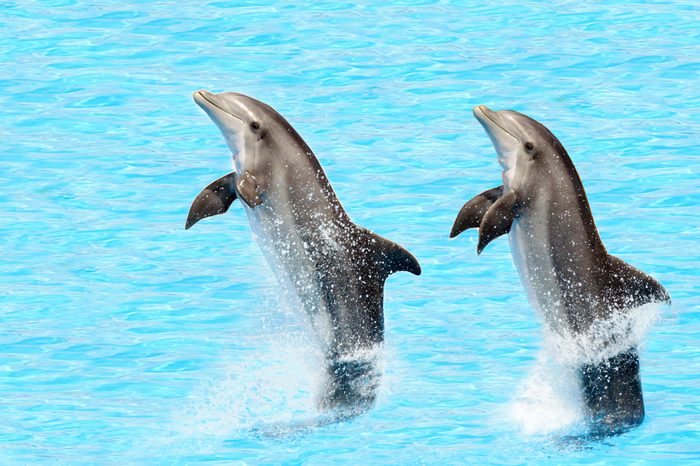
Dolphins
As mysterious as they are intelligent, dolphins have thrilled and captivated mere mortals for centuries. In addition to their ability to acquire and use language, did you know that these friendly, gentle mammals can also teach each other to walk on water? As reported by IFLScience, a bottlenose dolphin named Billie, who had spent time in captivity, taught other dolphins in the wild how to walk upright on water, using their tails. This behavior does not appear to serve any specific function, other than providing these highly social animals with lots of fun.
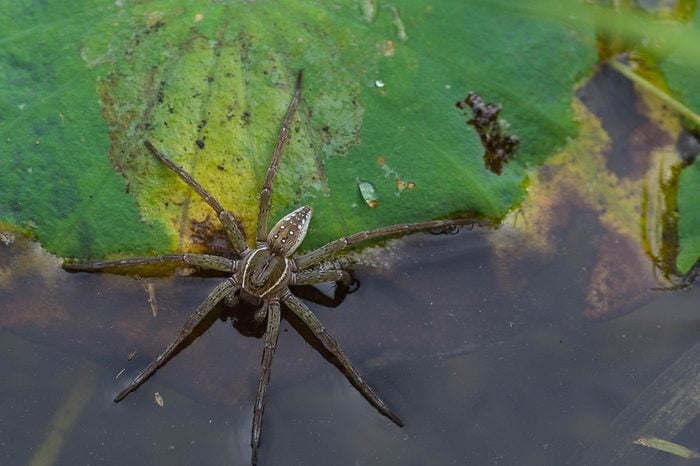
Fishing spiders
You wouldn’t want to find one hiding in your bedroom, but unless you live in a houseboat, no worries there. Fishing spiders (Dolomedes spp.) are found mostly at the edges of lakes, streams, and ponds. As large as the palm of a human hand and surprisingly strong, these hairy marvels are fast enough to catch tadpoles, but agile enough to walk, row, and glide on water. Fishing spiders have eight powerful legs that are completely covered with waxy, waterproof hair designed to keep them balanced on top of the water’s crust. That’s good news for the spiders when predators come to call, but bad news for the insects, frogs, and tiny birds they speedily catch for dinner. Check out these 13 bizarre bug facts that will totally freak you out.
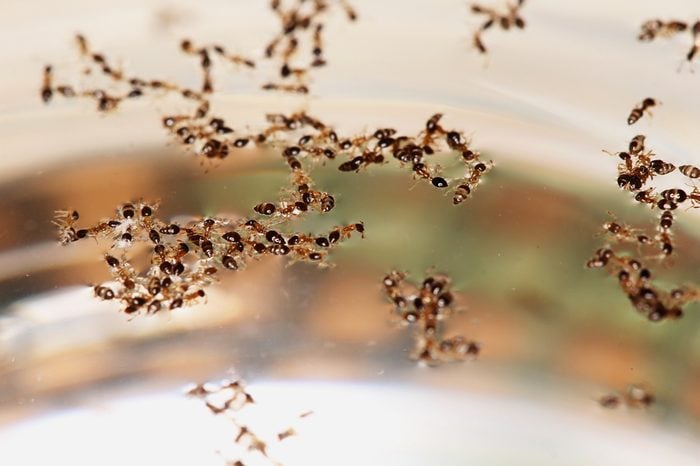
Fire ants
The sting of a fire ant can be incredibly painful and sometimes, even deadly. When the colonies of these dangerous land dwellers are disrupted or displaced by flood waters, they form a living raft comprised of thousands of their members, including queens, workers, eggs, and larvae. The raft is able to propel itself on top of the water’s surface until the colony finds a new place to call home. They do this by creating vast amounts of surface water tension, which keeps them afloat, dry and alive, for a mile or more. Here are 15 more animal species that will make your skin crawl.
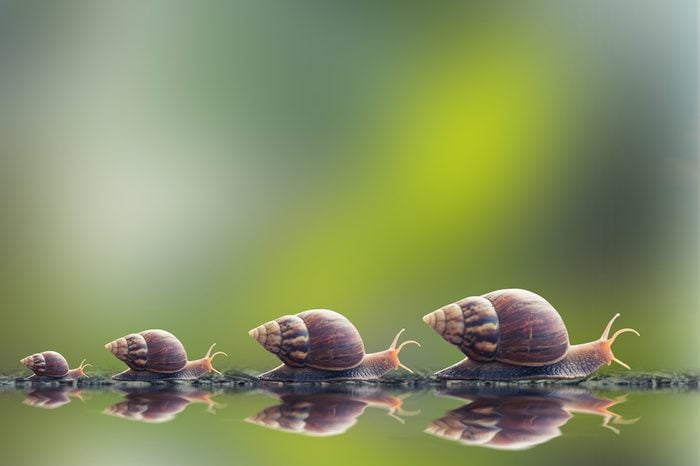
Water snail
The sight may leave you scratching your head, but these small mollusks are able to crawl upside down on the water’s surface, seemingly propelling themselves while holding onto nothing. Yes, it sounds crazy, but this slow-moving, upside-down snail dance is based on science, according to Nature. Water snails are able to trap air inside their shells, helping them stay afloat. They also create tiny, ripple-like waves in the water with their feet, which generate a similar movement in the snail’s mucus layer. Surface tension and water pressure does the rest. Unlike humans, snails are, luckily, not known to get dizzy when upside down.
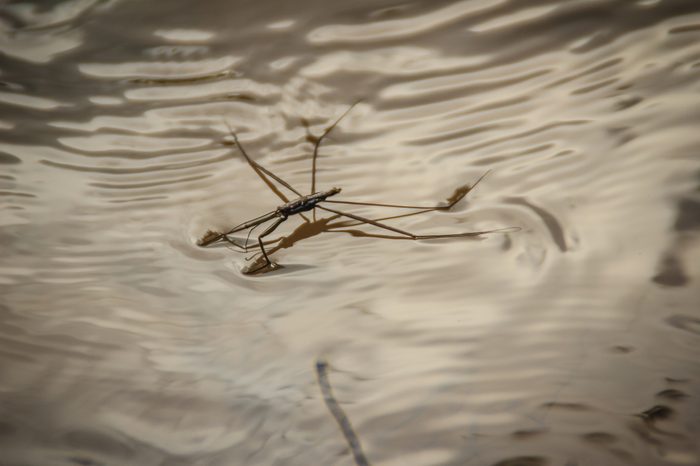
Water striders
Known as water striders, Jesus bugs, and pond skaters, these lighter-than-a-feather insects glide and stride on the surface of the water, thanks to a layer of hair that covers the entire bug. These tiny hairs, called microsetae, trap a layer of air around the striders, keeping them from breaking through the water’s surface tension layer. This helps them remain afloat, so they can use their hairy legs to navigate by rowing. Those long, spindly legs never piece the water. Instead, they form dents, so the graceful bugs can hunt for prey, and never sink. Read on for more animals with superpowers that would make Superman jealous.
